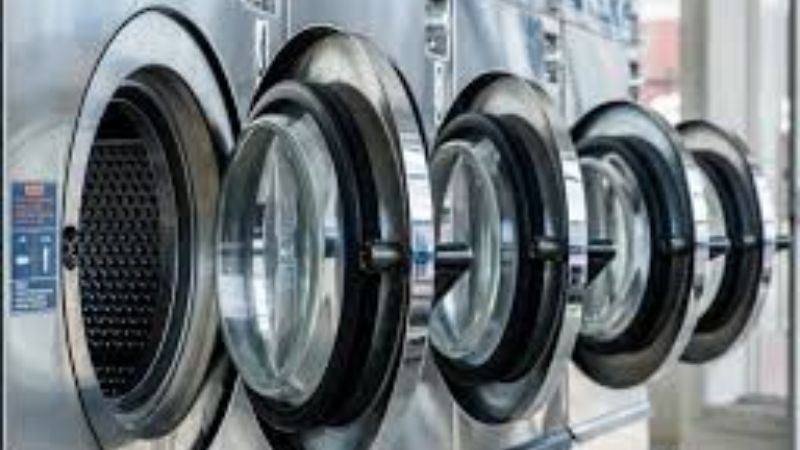The Ultimate Guide to Laundry: Tips, Tricks, and Best Practices

Introduction
Laundry is an essential chore in every household, yet it often feels like a never-ending task. Whether you’re a laundry novice or a seasoned pro, optimizing your laundry routine can save you time, money, and energy. In this comprehensive guide, we’ll share expert tips, tricks, and best practices to help you achieve laundry perfection.
Understanding Laundry Symbols
Laundry care labels can be confusing, but understanding these symbols is crucial for preserving your clothes. Here’s a quick breakdown of common laundry symbols:
- Washing: A symbol with a bucket of water indicates machine washing. Numbers inside the bucket specify the maximum washing temperature.
- Bleaching: A triangle symbol represents bleaching. An empty triangle allows bleaching with any product, while a triangle with two lines means use non-chlorine bleach only.
- Drying: A square with a circle inside indicates tumble drying. Dots inside the circle specify the drying temperature.
- Ironing: An iron symbol shows whether you can iron the garment and at what temperature.
- Dry Cleaning: A circle symbol indicates dry cleaning. Letters inside the circle specify the type of solvent to use.
Sorting Your Laundry
Properly sorting your laundry is essential to prevent color bleeding and fabric damage. Here’s how to do it:
- Sort by Color: Separate whites, darks, and colors. This prevents dark dyes from staining lighter fabrics.
- Sort by Fabric Type: Wash delicate fabrics separately from heavy fabrics to prevent damage. For example, wash silk and lace separately from jeans and towels.
- Sort by Soil Level: Heavily soiled items should be washed separately to ensure they get clean without spreading dirt to lightly soiled clothes.
Choosing the Right Detergent
The detergent you choose can make a significant difference in the cleanliness and longevity of your clothes. Consider the following options:
- Liquid Detergent: Ideal for pre-treating stains and for use in cold water.
- Powder Detergent: Effective for lifting dirt and stains in hot water.
- Pods: Convenient and pre-measured, but can be more expensive.
- Eco-Friendly Detergents: Great for the environment and sensitive skin.
Washing Machine Settings
Modern washing machines offer various settings to cater to different laundry needs. Here are some key settings to know:
- Normal Cycle: Best for cotton, linen, and sturdy fabrics.
- Delicate Cycle: Ideal for silk, wool, and delicate synthetics.
- Heavy Duty Cycle: Use for heavily soiled items like towels and jeans.
- Quick Wash: Great for lightly soiled items and when you’re in a hurry.
- Temperature Settings: Cold water saves energy and is gentler on clothes, while hot water is better for killing germs and removing tough stains.
Drying Your Laundry
Drying your clothes correctly can prevent shrinkage, color fading, and fabric damage. Here are some drying tips:
- Tumble Dry: Use low heat for delicates and high heat for sturdier fabrics.
- Air Dry: Hang items like sweaters and bras to dry to maintain their shape.
- Dryer Sheets: Use dryer sheets to reduce static and add a fresh scent to your laundry.
Ironing and Folding
Proper ironing and folding can keep your clothes looking crisp and neat. Follow these tips:
- Ironing: Use the appropriate temperature setting for each fabric. Iron delicate fabrics on low heat and use steam for stubborn wrinkles.
- Folding: Fold clothes as soon as they’re dry to prevent wrinkles. Use a folding board for uniform folds.
Laundry Hacks
Enhance your laundry routine with these clever hacks:
- Stain Removal: Treat stains immediately with a stain remover or by rubbing liquid detergent directly on the stain before washing.
- Fabric Softener Alternatives: Use white vinegar or baking soda as a natural fabric softener.
- Prevent Fading: Turn dark clothes inside out before washing and use cold water to prevent fading.
- Refresh Clothes: Toss a damp towel with essential oils into the dryer to freshen up clothes.
- DIY Dryer Sheets: Make your own dryer sheets by soaking cloth pieces in a mixture of water and fabric softener.
Eco-Friendly Laundry Tips
Laundry can have a significant environmental impact, but there are ways to make your routine more sustainable:
- Wash Full Loads: Save water and energy by only running your washer with full loads.
- Cold Water Wash: Most clothes can be effectively cleaned in cold water, which reduces energy consumption.
- Line Dry: Whenever possible, line dry your clothes to save energy and reduce wear and tear on fabrics.
- Natural Stain Removers: Use lemon juice, baking soda, and hydrogen peroxide as eco-friendly stain removers.
- Eco-Friendly Detergents: Choose biodegradable and phosphate-free detergents.
Caring for Different Fabrics
Different fabrics require different care. Here’s how to handle some common types:
- Cotton: Durable and easy to clean, cotton can usually be washed in warm or cold water. Avoid high heat in the dryer to prevent shrinkage.
- Wool: Hand wash or use the delicate cycle with cold water. Lay flat to dry to prevent stretching.
- Silk: Hand wash in cold water with a gentle detergent. Hang to dry out of direct sunlight.
- Synthetic Fabrics: Wash in cold water on the gentle cycle. Tumble dry on low or air dry.
- Denim: Turn inside out and wash in cold water to preserve color. Air dry or tumble dry on low heat.
Handling Special Laundry Situations
Sometimes, laundry requires special attention. Here’s how to handle a few tricky scenarios:
- Blood Stains: Rinse in cold water and treat with hydrogen peroxide or a paste of baking soda and water.
- Grease Stains: Apply dish soap directly to the stain before washing.
- Ink Stains: Dab with rubbing alcohol and then wash as usual.
- Sweat Stains: Soak in a mixture of water and vinegar before washing.
Organizing Your Laundry Space
A well-organized laundry space can make the chore more efficient and enjoyable:
- Sorting Bins: Use labeled bins for sorting clothes by color and fabric type.
- Shelving and Storage: Install shelves to keep detergents, fabric softeners, and other supplies organized and within reach.
- Folding Station: Create a dedicated area for folding clothes immediately after they’re dry.
- Hanging Rods: Install rods for hanging clothes to air dry or to prevent wrinkles.
Final Thoughts
Mastering the art of laundry involves understanding care labels, sorting clothes properly, choosing the right detergent, using appropriate machine settings, drying clothes correctly, and implementing effective ironing and folding techniques. By following these tips and tricks, you can keep your clothes looking their best and make laundry day a breeze.
Embrace these best practices, and you’ll transform your laundry routine into a more efficient and enjoyable task. Happy laundering!
Conclusion
Laundry doesn’t have to be a daunting chore. By understanding laundry symbols, sorting clothes correctly, selecting the right detergent, and using proper washing and drying techniques, you can maintain the quality and longevity of your garments. Embracing eco-friendly practices and organizing your laundry space can further enhance the efficiency of your routine.
With these expert tips and tricks, you’ll find that doing laundry can become a manageable and even satisfying task. Keep your clothes looking fresh and clean, and enjoy the benefits of a well-ordered laundry system. Happy laundering !









